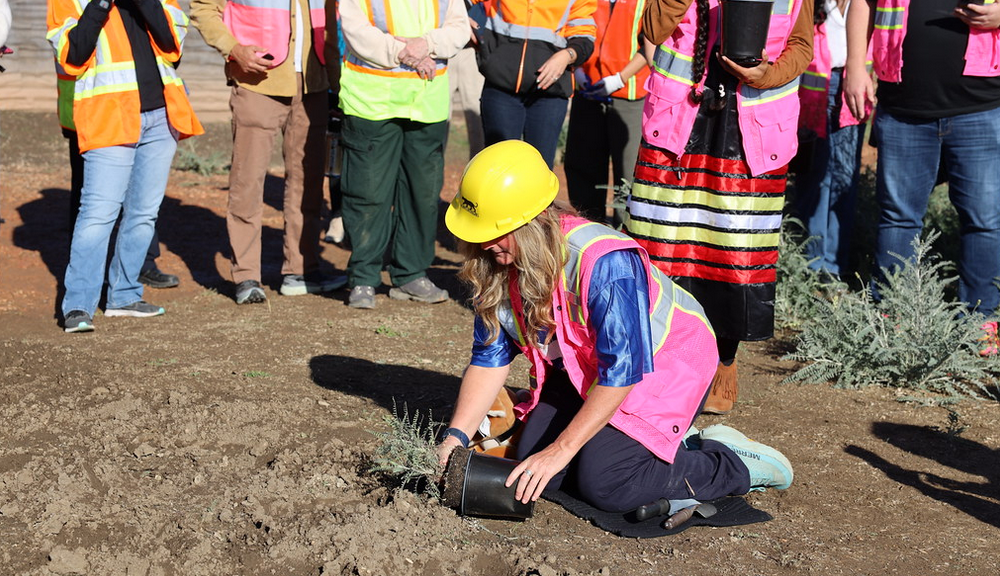Caltrans Announces Thousands of Native Plants to Bloom on the Wallis Annenberg Wildlife Crossing in Agoura Hills
/Beth Pratt prepares the first plant for planting atop the Wallis Annenberg Wildlife Crossing
Caltrans announced last week that a major addition has started on the Wallis Annenberg Wildlife Crossing – the world’s largest of its kind that will connect open space on both sides of US 101 in Agoura Hills. Approximately 5,000 native plants will be installed atop the bridge, scheduled for completion in fall 2026.
The collection of native plants includes coastal sage scrub species such as California aster, a source of pollen and nectar for bees; purple sage, which attracts hummingbirds; hoaryleaf ceanothus, which acts as a shelter for small wildlife; narrowleaf milkweed that is critical to the survival of monarch butterflies; bush sunflowers and scarlet bugler. The new habitat will support the movement of native species like mountain lions, bobcats, deer, foxes and pollinators while reducing wildlife-vehicle collisions and the genetic isolation caused by freeways.
This progress is the result of years of preparation by a team of biologists, horticulturists, soil scientists, engineers, and indigenous species experts. Since 2021, a dedicated native plant nursery collected more than 1.1 million seeds representing over 50 local plant varieties, all sourced from within five miles of the bridge site. These seeds will sustain a resilient, drought-tolerant ecosystem atop the crossing, carefully designed to support native wildlife and restore connectivity to critical habitats.
In total, the surrounding 13-acre project area will be revitalized with approximately 50,000 native plants and trees, including coast live oak, valley oak, ceanothus, sage species, California buckwheat, and milkweed to support pollinators like monarch butterflies. Irrigation systems integrated into the bridge design will ensure plant survival while reducing fire risk.
The project is led by a coalition of partners, including Caltrans, the National Park Service, the Santa Monica Mountains Conservancy, the Mountains Recreation and Conservation Authority, the National Wildlife Federation, the SAMO Fund and Rock Design Associates.
The public is invited to follow construction on the bridge in real-time through its dedicated webcam and learn more about the Save LA Cougar’s #P22Legacy Campaign phase at savelacougars.org and the Wildlife Crossing Fund at wildlifecrossingfund.org.


